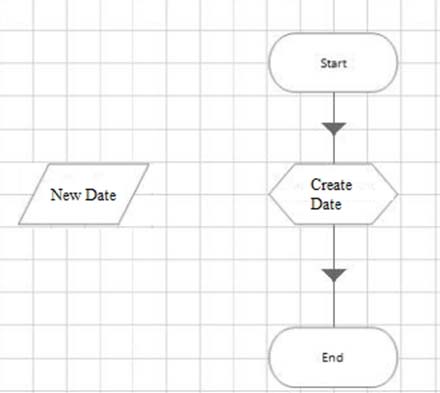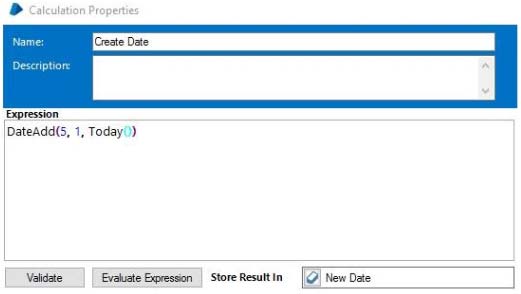A process contains only 4 stages. Study the following process below:

The data item "˜New Date is a date data item with no initial value.
The calculation stage is configured as follows:

What will happen when you execute the Create Date stage?
A process contains only 4 stages. Study the following process below:

The data item "˜New Date is a date data item with no initial value.
The calculation stage is configured as follows:

What will happen when you execute the Create Date stage?
The DateAdd function uses the first parameter to define the interval type. In this specific function, a value of 5 for the interval type represents adding months. Therefore, when this function is executed, one month (the second parameter) will be added to today's date (the third parameter). The result will be stored in the New Date data item.
DateAdd(<interval<,<number>,<date>) *Interval* 0 Year 1 Week 2 (n/a) 3 (n/a) 4 Quarter Quarter 5 Month 9 Days
Usually dateadd used by identifying the interval first But here its mentioned 5, Which means WHAT????? As per some References, Answer is B But I still didnt get it
Usually dateadd used by identifying the interval first like dateadd(year, 1, '2015/1/1') which will add one year to the mentioned date But here its mentioned 5, Which means WHAT????? As per some References, Answer is B But I still didnt get it
The first parameter is the interval type. A value of 5 represents month. The second parameter is the value to be added to the date, which is the third parameter.
Correct answer is B
Yes, B is the correct answer.
it's b